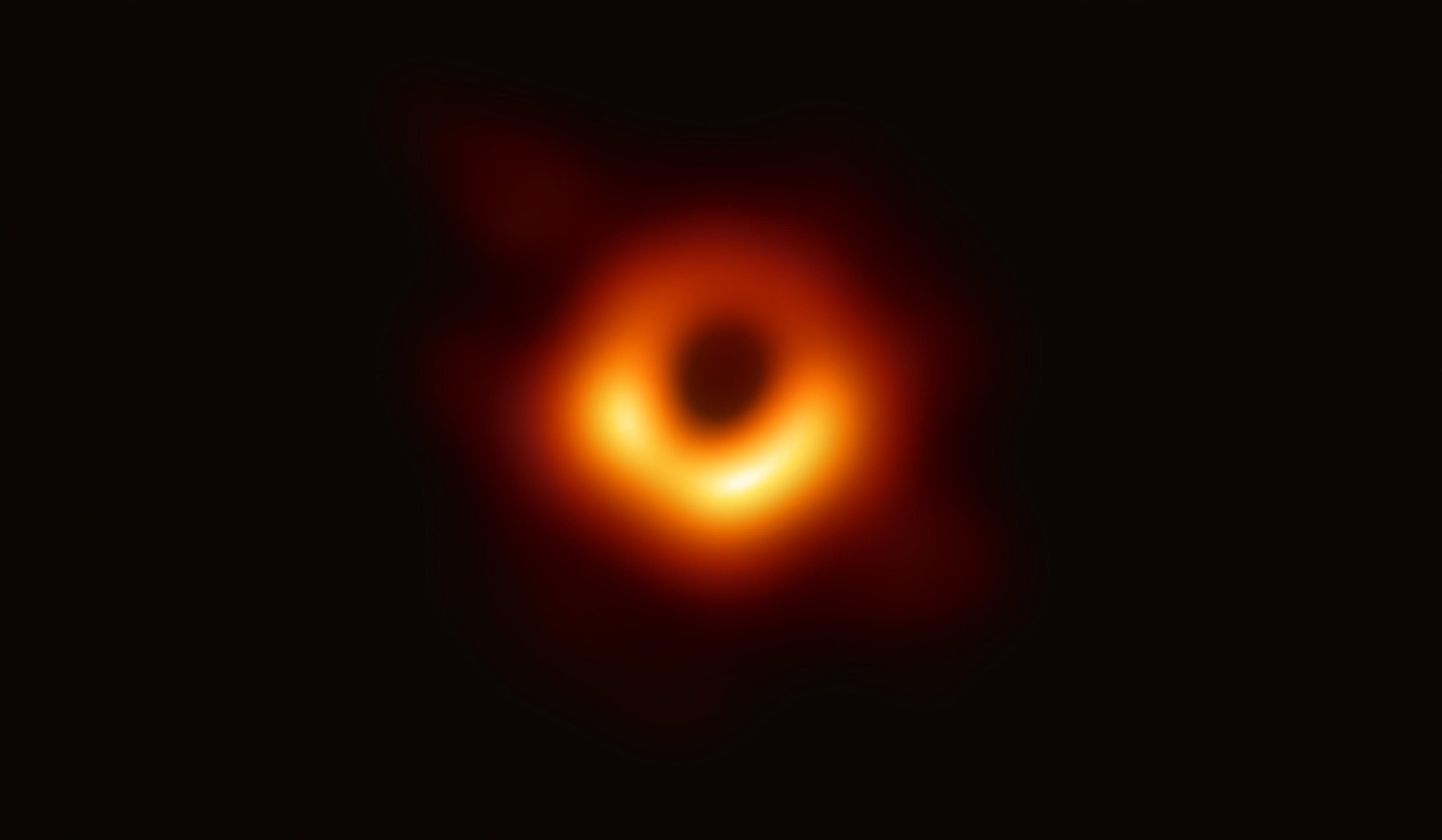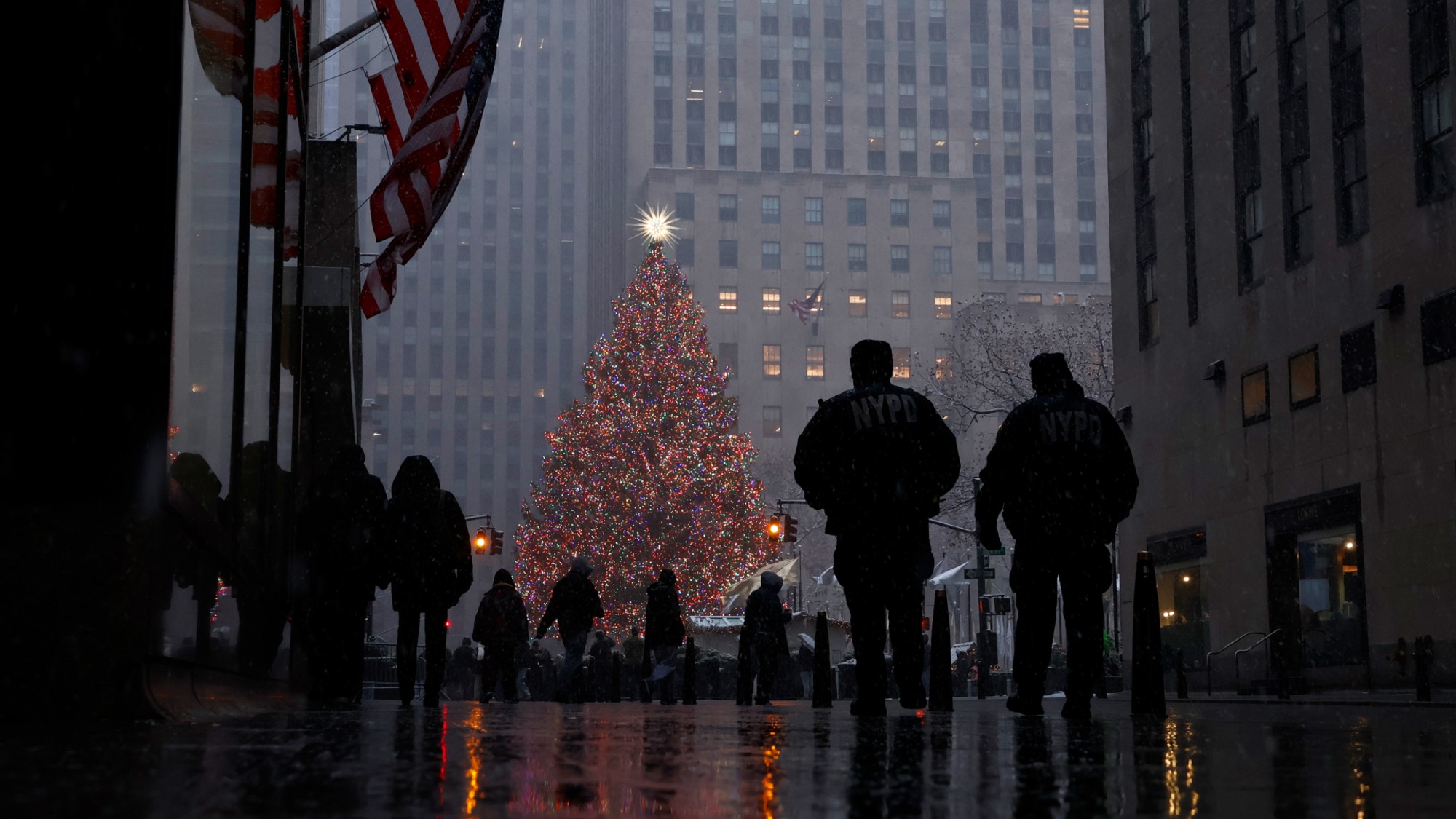Not what it seems
Seeing a black hole is a reminder that the universe is much stranger than we think


This is the editor’s letter in the current issue of The Week magazine.
In The Week's office, the country's major newspapers are laid out in a line each day along a counter. One day last week, the same spooky image stared out from every front page, like a cosmic eyeball — the first-ever "photo" of a black hole. It's an achievement once thought impossible, given that black holes exert such monstrous gravity that they swallow light itself. To see the unseeable, it took 200 scientists on four continents using eight radio telescopes, synchronized so that they functioned like one giant radio dish the size of Earth. Even Einstein, whose theories predicted black holes, initially doubted something so outlandish could exist. Now astronomers have captured what one looks like: a radiant orange-red ring of superheated gas swirling around an ominous void — the "event horizon" — where all matter and energy is sucked into no-one-knows-where.
The value of feats like this are not entirely scientific: They remind us that human beings are not always petty, small, and mean, and that at our collaborative best, Homo sapiens is capable of magnificent things. Over the last century, science has shown that our universe is a far stranger place than our everyday experience would suggest. Space itself is curved and warped by mass. Time slows down on an object the faster it travels. Electrons act both as particles and waves. "Entangled" particles seem to instantly know and react to what happens to their partner across vast distances. At the quantum level, there is no empty space: Particles constantly pop in and out of existence, creating an ephemeral quantum "foam." At the other end of the scale, there are least two trillion galaxies in the universe, each containing billions of stars and probably more than a few planets where intelligent life has evolved and is puzzling over the same questions as we are. The more we discover, the more it becomes clear that our certainties, whatever they may be, are built on illusions. We live in a great mystery.
The Week
Escape your echo chamber. Get the facts behind the news, plus analysis from multiple perspectives.

Sign up for The Week's Free Newsletters
From our morning news briefing to a weekly Good News Newsletter, get the best of The Week delivered directly to your inbox.
From our morning news briefing to a weekly Good News Newsletter, get the best of The Week delivered directly to your inbox.
A free daily email with the biggest news stories of the day – and the best features from TheWeek.com
William Falk is editor-in-chief of The Week, and has held that role since the magazine's first issue in 2001. He has previously been a reporter, columnist, and editor at the Gannett Westchester Newspapers and at Newsday, where he was part of two reporting teams that won Pulitzer Prizes.
-
 How climate change is affecting Christmas
How climate change is affecting ChristmasThe Explainer There may be a slim chance of future white Christmases
-
 The MAGA civil war takes center stage at the Turning Point USA conference
The MAGA civil war takes center stage at the Turning Point USA conferenceIN THE SPOTLIGHT ‘Americafest 2025’ was a who’s who of right-wing heavyweights eager to settle scores and lay claim to the future of MAGA
-
 The 8 best drama movies of 2025
The 8 best drama movies of 2025the week recommends Nuclear war, dictatorship and the summer of 2020 highlight the most important and memorable films of 2025
-
 How Bulgaria’s government fell amid mass protests
How Bulgaria’s government fell amid mass protestsThe Explainer The country’s prime minister resigned as part of the fallout
-
 Femicide: Italy’s newest crime
Femicide: Italy’s newest crimeThe Explainer Landmark law to criminalise murder of a woman as an ‘act of hatred’ or ‘subjugation’ but critics say Italy is still deeply patriarchal
-
 Brazil’s Bolsonaro behind bars after appeals run out
Brazil’s Bolsonaro behind bars after appeals run outSpeed Read He will serve 27 years in prison
-
 Americans traveling abroad face renewed criticism in the Trump era
Americans traveling abroad face renewed criticism in the Trump eraThe Explainer Some of Trump’s behavior has Americans being questioned
-
 Nigeria confused by Trump invasion threat
Nigeria confused by Trump invasion threatSpeed Read Trump has claimed the country is persecuting Christians
-
 Sanae Takaichi: Japan’s Iron Lady set to be the country’s first woman prime minister
Sanae Takaichi: Japan’s Iron Lady set to be the country’s first woman prime ministerIn the Spotlight Takaichi is a member of Japan’s conservative, nationalist Liberal Democratic Party
-
 Russia is ‘helping China’ prepare for an invasion of Taiwan
Russia is ‘helping China’ prepare for an invasion of TaiwanIn the Spotlight Russia is reportedly allowing China access to military training
-
 Interpol arrests hundreds in Africa-wide sextortion crackdown
Interpol arrests hundreds in Africa-wide sextortion crackdownIN THE SPOTLIGHT A series of stings disrupts major cybercrime operations as law enforcement estimates millions in losses from schemes designed to prey on lonely users
